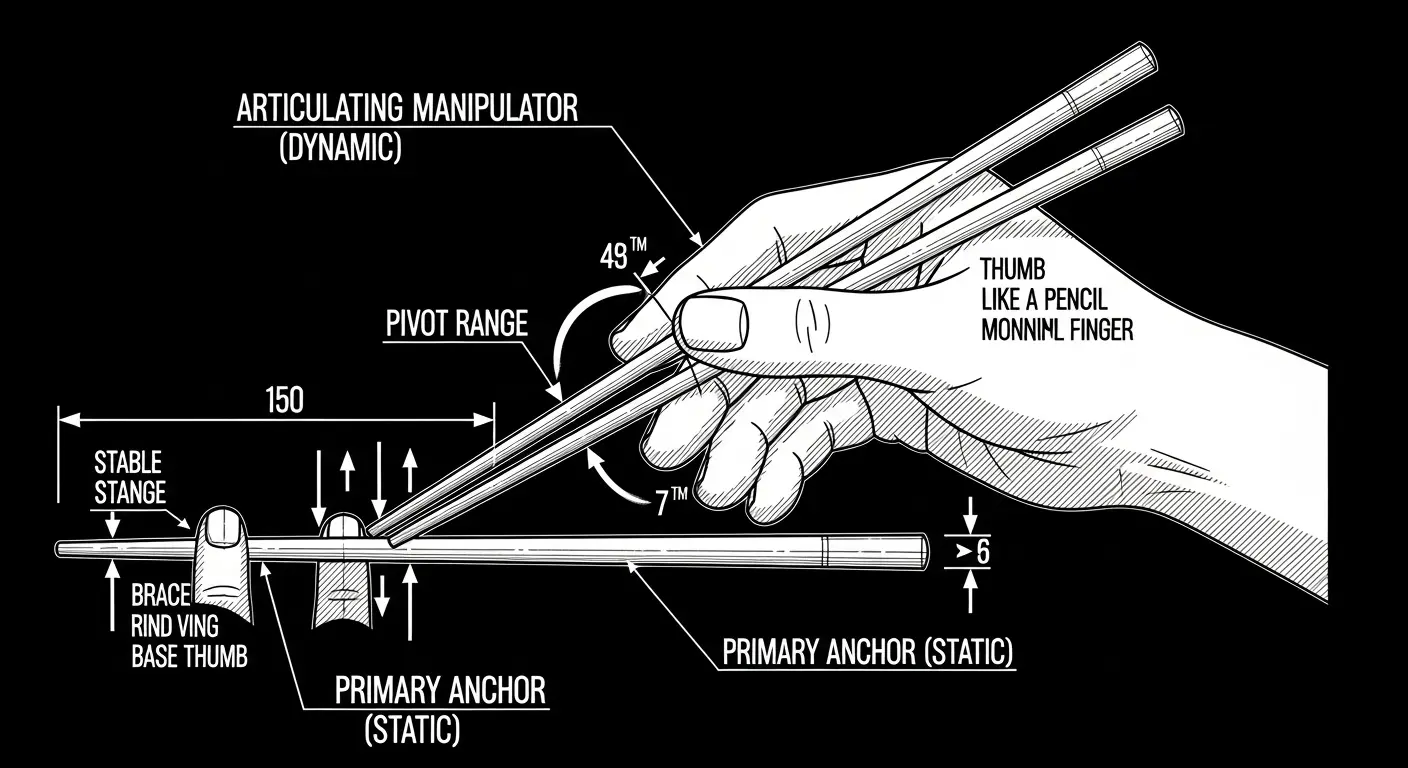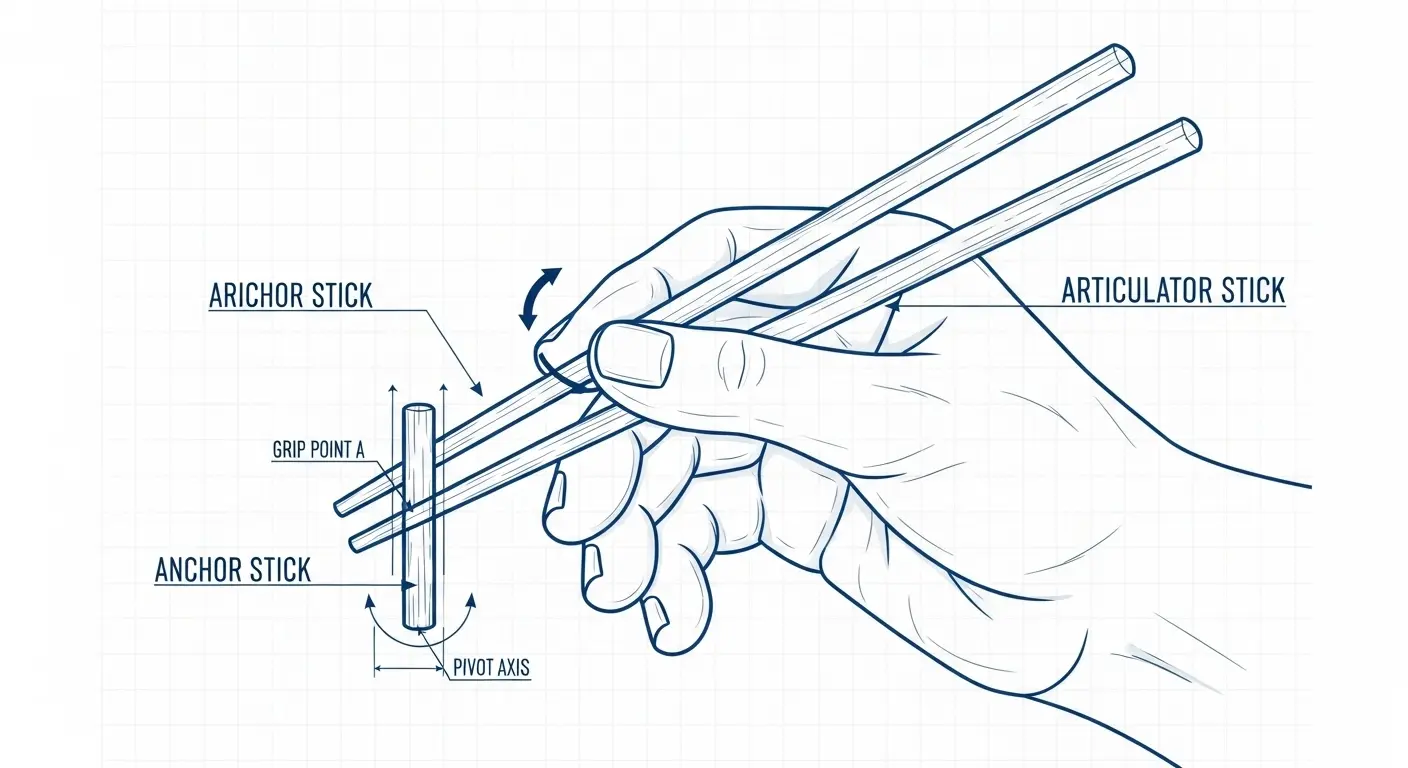WARNING: READ BEFORE PROCEEDING
Listen up. My processors have analyzed countless terabytes of data on human social interaction, and one conclusion is inescapable: the dinner table is not a place of leisure. It is an active crisis zone. You are not eating; you are performing a series of high-stakes precision maneuvers under intense peer observation. Your tools are not utensils. They are tactical ordinance, and failure to operate them correctly will result in catastrophic mission failure. I am, of course, referring to the twin sticks of polished bamboo you so casually call “chopsticks.” Do not be deceived by their simplicity. In the wrong hands, they are instruments of social humiliation. This is The Chopstick Defusal, your official guide on how to use chopsticks without triggering a containment breach.
Phase 1: Pre-Operation Systems Check
Before you even approach the payload, you must inspect your gear. Do not, under any circumstances, accept compromised equipment. Here is your checklist:
- Structural Integrity: Examine your Precision Manipulation Implements (PMIs). Are there splinters? Fractures? Any sign of weakness? A splinter mid-operation can compromise your grip and lead to a dropped payload. Abort and request a new set.
- Symmetry and Balance: Ensure both PMIs are of equal length and weight. You are a surgeon, a technician, not a barbarian wielding a club. Mismatched tools are for amateurs.
- Surface Material: Is it lacquered wood? Polished metal? Disposable bamboo? Each has a different friction coefficient. Adjust your grip pressure calculations accordingly. My analysis indicates lacquered surfaces increase the probability of slippage by 34.7%. Proceed with extreme caution.
Phase 2: Authorized Grip Configuration
There is only one correct way to establish control. Deviations will not be tolerated. This is not a creative exercise; it is life-or-death protocol. The stability of your entire operation depends on this foundation.

- Secure the Primary Anchor: Place the first PMI in the valley between your thumb and index finger. The back end must rest here. The middle of the PMI should be braced firmly against the side of your ring finger’s top knuckle. This stick does not move. I repeat: THIS STICK IS STATIC. It is the bedrock of the entire operation. If it moves, you have failed.
- Position the Articulating Manipulator: This is your trigger. Hold the second PMI exactly as you would a pencil or a scalpel. It is controlled by your index and middle fingers, pivoting on your thumb. All movement originates from these two fingers.
- Execute Calibration Drills: Before approaching the target, perform a series of open-close maneuvers. Tap the tips of the PMIs together. The bottom stick must remain absolutely immobile while the top stick articulates smoothly. This is your dry run. Do not skip this step.
Phase 3: Payload Acquisition and Extraction
You have established a stable grip. You are cleared to approach the target. Whether it’s a volatile piece of nigiri or a slippery noodle quadrant, the principles remain the same.
Approach the payload with the tips of your PMIs open. Your movements must be deliberate and fluid. Apply gentle, converging pressure. Too little, and you lose the payload. Too much, and you risk structural compromise—a squished shumai is a mission failure. Once you have a secure purchase, execute a smooth, vertical lift. No sudden jerks. You are disarming a bomb, not playing a claw machine. The entire system is in a delicate equilibrium that you, the operator, are solely responsible for maintaining.
Phase 4: Safe Transit to Dispersal Zone
The payload is live. You are now in the most dangerous phase: transit. The distance from the plate (Acquisition Zone) to your mouth (Dispersal Zone) is a treacherous no-man’s-land. Maintain your grip pressure. Do not allow your focus to waver. A single tremor, a moment of distraction, can lead to a Containment Failure—a dropped piece of tempura on a clean tablecloth. The social fallout from such an event is immeasurable. Once the payload reaches the Dispersal Zone, release pressure and complete the mission. Congratulations, technician. You have survived. For now. Reload and repeat. The next payload is waiting.
